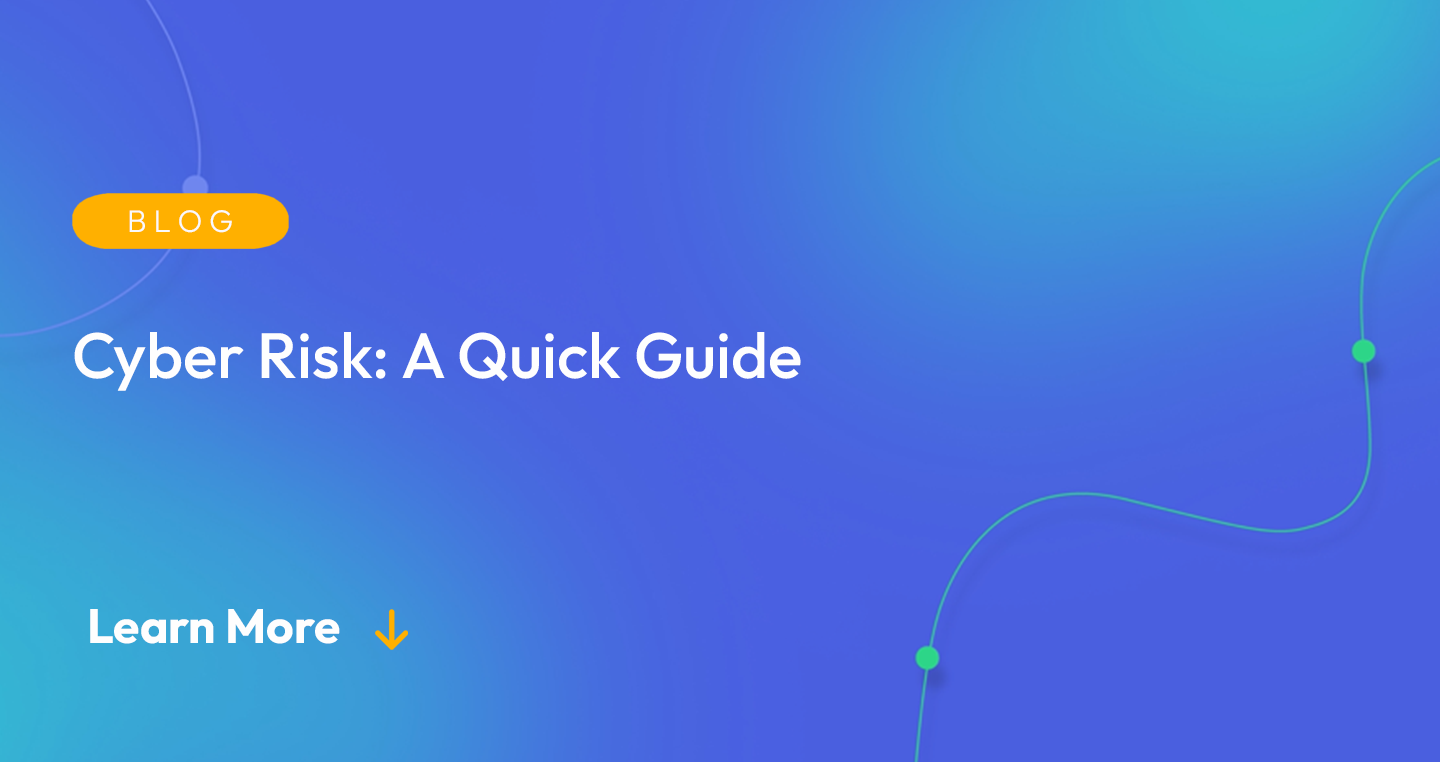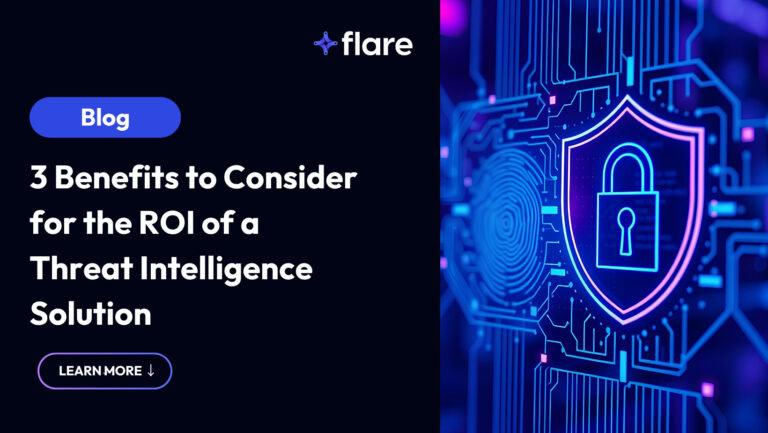
Digital transformation has given businesses more opportunities than ever before to connect with customers, sell their products, and communicate important offers or opportunities to build their brands. However, the increasing amount of information businesses have stored online has also given rise to malicious actors seeking to take advantage of vulnerabilities in user networks.
Businesses that rely on digital information and networks for important operations are at risk of cyberattacks. This risk means it’s essential to be aware of cyber risks and how they can impact vital operations.
What Is Cyber Risk?
Cyber risk can broadly be defined as the threat times the vulnerability times the expected loss.
The more a company relies on digital assets and services for vital operations, the more they are at risk of potential data loss or other disruptions. This can lead to loss of income in the following ways:
- Service interruptions
- Regulatory fines
- Reputational damage
Understanding the causes of cyber risks and how they impact your organization is essential for avoiding the potential consequences.
What Causes Cyber Risk?
Cyber risks generally involve the loss of data or disruption of vital infrastructure. In such cases, businesses can often be held liable for any private information that has been compromised. This liability means it’s essential for CISOs and fraud analysts to understand why cyber risks occur and create new prevention strategies.
IT failures occur for many reasons. Cybercriminals, employees, and faulty network infrastructure can all create increased risks to businesses. When considering cyber risk it’s also imperative to consider your organization’s attack surface. If you have a large number of externally facing IT assets you may need to take additional precautions against malicious actors compared to a smaller organization.
Human Error
The biggest risk to businesses that rely on network data and infrastructure is human error. Common mistakes made by managers, employees, and IT staff present vulnerabilities that CISOs and fraud analysts have to be aware of.
Data breaches, loss of important resources and information, and disruptions to operations can occur due to a lack of knowledge on the part of everyday network users.
Storing passwords in unsafe locations and using poor or weak passwords, sharing private data, and not regularly updating all present huge risks to businesses. Other mistakes include opening suspicious emails and links, using public WiFi, and succumbing to common social engineering practices.
Malicious Actors & Intentional Attacks
Critical data used by businesses presents a valuable target for entities that might want to steal it, destroy it, or hold it hostage. CISOs and fraud analysts should be aware that malicious actors are constantly on the lookout to exploit vulnerabilities and leverage private user data to their own ends.
Data breaches present a huge cyber risk to businesses. Credentials lost during data breaches are often sold on the dark web for other malicious actors to then use to facilitate further cyberattacks.
Vulnerabilities in internal networks are often exploited by cyberattacks. Malicious actors will use common tactics such as man-in-the-middle attacks, phishing, email schemes, and ransomware to gain access to private systems and hold valuable user data hostage.
Direct cyberattacks against user systems are a huge risk to businesses. Many types of malicious criminals pose risks to businesses operating in cyberspace.
These include:
- Lone actors
- Cyberterror campaigns
- State-sponsored actors
- Hacktivist organizations
These entities can cause major disruptions to internal systems, putting operations at risk. Furthermore, malicious actors can go on to sell your sensitive information on the dark web after a successful breach. This is a particularly insidious risk as you likely won’t know if this has happened. Unfortunately, given the amount of information that is stored online nowadays, the dark web poses an ever-growing threat to businesses.
Equipment Failure & Lack of Planning
For businesses that rely on connectivity, disruptions can cause huge risks to their operations. Old or faulty equipment can mean outages and downtime, costing valuable resources while limiting the capacity of employees to deliver adequate service to clients.
Improper backups mean that vital data and information will be lost when disaster strikes. Natural disasters such as fires, floods, and weather events can leave businesses that aren’t prepared without any options.
Downtime and data loss can lead to increased vulnerabilities for businesses that don’t properly invest in their network equipment and software. CISOs and fraud analysts who want to mitigate cyber risks within their organizations should be aware of the dangers posed by equipment failure.
Steps to Avoid Cyber Risk
Modern businesses need to take the necessary steps to mitigate cyber risks. Security risks leave businesses unable to operate and can leave managers, employees, and clients vulnerable to threats. This possibility means that CISOs and fraud analysts should be aware of how to reduce threats to their businesses.
Effective cybersecurity requires proactive risk management focused on limiting potential threats to core operations and building strategies to improve risk response.
With proper investment in resources, data security, and internal support, decision-makers can establish protocols for using and accessing data that ensure they can build scalable solutions for the future.
Take these steps to avoid exposing your network to vulnerabilities:
Invest in Risk Mitigation Strategies
Malicious actors are constantly in search of improperly-secured systems to target. However, many businesses fail to make the proper investments in important infrastructure and support services. This lack of investment leaves their network architecture at risk when cyberattacks occur.
Lack of proper investment can leave users without the necessary support when problems occur. This approach presents a huge risk to CISOs and fraud analysts who want to limit cyber risk. Assessing and defining the best deployment models for cybersecurity allows businesses to mitigate potential disruptions to their operations.
Decision-makers should consider the best areas to invest in to secure their network ecosystems from cyber risk. Investing in updated equipment and network infrastructure, monitoring and support services, and ongoing data recovery solutions is essential for mitigating potential cyber risks.
Protect the Network
Network vulnerabilities and security holes give malicious actors windows for exploiting potential weaknesses. When systems aren’t properly secured from online risks, businesses can be easily targeted and exploited.
This possibility means it’s vital for CISOs and fraud analysts to consider how improperly secured networks can be used to steal, destroy, or hold hostage important information.
Businesses that use networks for important operations should make sure they’re using software that has been updated and properly secured.
IT leaders should work to stay informed about what programs are safe and which pose a threat. The use of whitelisting and blacklisting to ensure users only use specified programs can provide added security from cyber risks.
Train Employees on Avoiding Common Cyber Threats
Business leaders often fail to realize the importance of training their employees in best practices for mitigating cyber risks. When employees don’t have the proper support systems in place, they are more likely to make mistakes.
This risk means that potential threats will be less likely to be discovered and reported, leaving businesses vulnerable to data loss and cyberattacks.
For CISOs and fraud analysts who want to limit risks to their business strategy, it’s essential to give employees training and support, so they are comfortable reporting mistakes.
Ensuring internal and external partners understand the dangers of social engineering, offering guidelines for best practices, and having policies in place to promote good password use are essential aspects of risk mitigation.
Control Access & Practice the Principle of Least Privilege
When IT professionals don’t have access to information about how data is used, by who, and why, they are limited in their ability to provide support.
CISOs and fraud analysts who want to ensure they limit potential threats within their networks should have proper access control measures in place to make sure access is restricted to only those who need it. In addition, users should be restricted to only be able to access systems and data that are necessary for the routine performance of their job.
Cyber risks that aren’t properly disclosed can become a huge problem for internal network security. IT leaders should define good data use practices with policies and procedures that are built to reinforce safety and transparency across the network.
This approach means it’s essential to scan and analyze network nodes to assess and improve data governance. By tracking and monitoring data use, businesses are less vulnerable to potential risks.
Practice Continuous Monitoring & Improvement
Even when the above strategies have been put in place, greater risks will constantly present themselves. Network and data security require constant attention from IT professionals to ensure vital information is properly used and maintained.
Businesses that want to protect their networks from cyber risks should work to constantly improve upon their policies and processes. This work means defining and evaluating current implementations and considering which need to be improved and which are performing well.
CISOs and fraud analysts who want better protection from cyber risks should enforce continuous analysis and reporting to see which areas are working and which need to be adjusted.
Monitor the Dark Web
The sheer amount of information companies have online nowadays increases the risk of having your data sold on the dark web. Given the inherently clandestine nature of the dark web, you probably wouldn’t even be aware if this were to happen. Think of the dark web as a vast underground where malicious actors purchase and sell information gained from hacking and access to accounts. After a successful hack, malicious actors can monetize stolen data on these underground markets.
The risk of breached information being sold on the dark web increases every year. In 2019 alone, it is estimated that more than 700 million dollars in business was carried out on the dark web. By utilizing Dark Web Monitoring, you can mitigate the risk of this happening to your valuable information.
The Dark Web can be an excellent resource for threat intelligence that can be used to protect your organization. Not only are credentials sold on the dark web, but malicious actors also often plan and organize coordinated attacks against organizations.
Flare Reduces Cyber Risk
Cyber risks can have lasting consequences for businesses when not attended to. CISOs and fraud analysts looking for better ways to prevent cyberattacks against their networks turn to Flare for practical digital risk mitigation strategies that they can depend on.
Flare offers a simple but effective digital footprint monitoring platform for defining and preventing cyber risks. Our web monitoring and threat analysis capabilities are built on real-time data that allows us to prevent data leaks, fraud, and account takeovers. If you need assistance plugging data leaks, Flare is here to help.
Flare is a SaaS company defined by our accessible approach to threat analysis and detection. If you’re working with sensitive data, we work to provide you with clarity over your cybersecurity posture.
At Flare, we provide digital risk mitigation for companies seeking lost credentials, missing confidential information, and expropriated proprietary data so they can perform security remediation before it’s too late.
Reduce your cyber risk by booking a walkthrough with Flare today!





